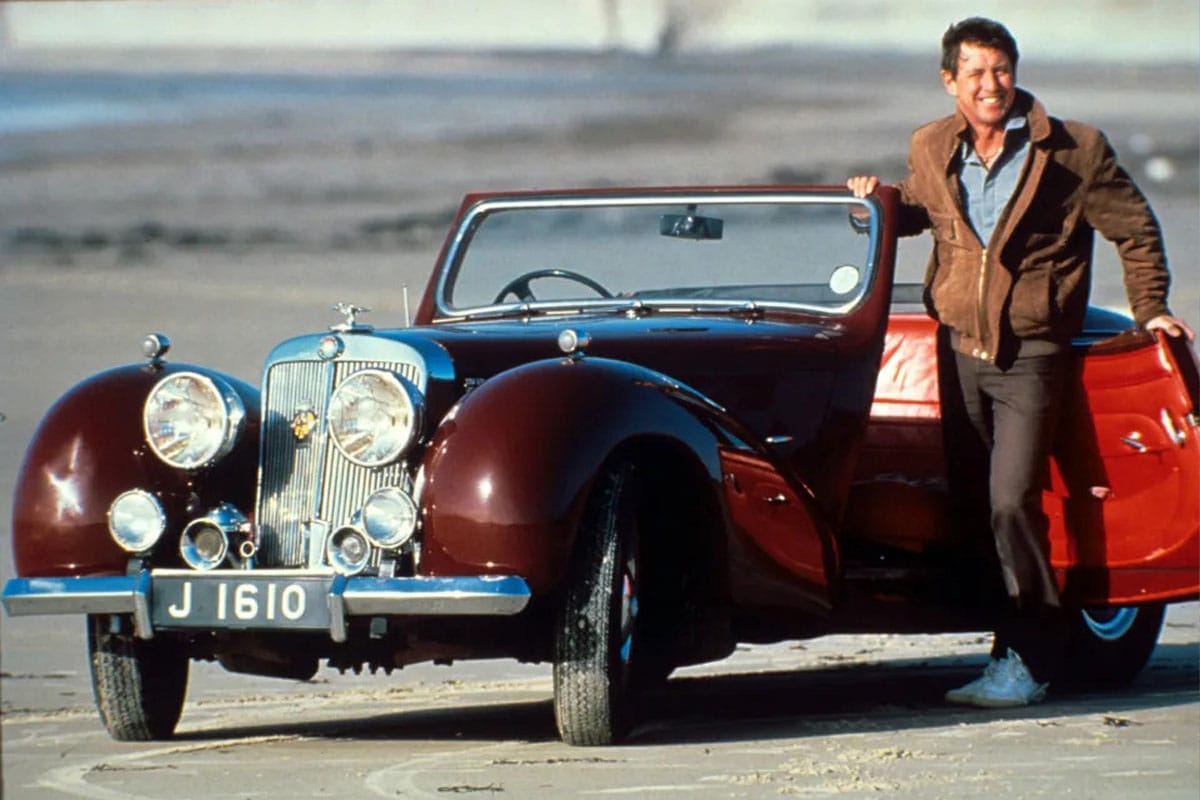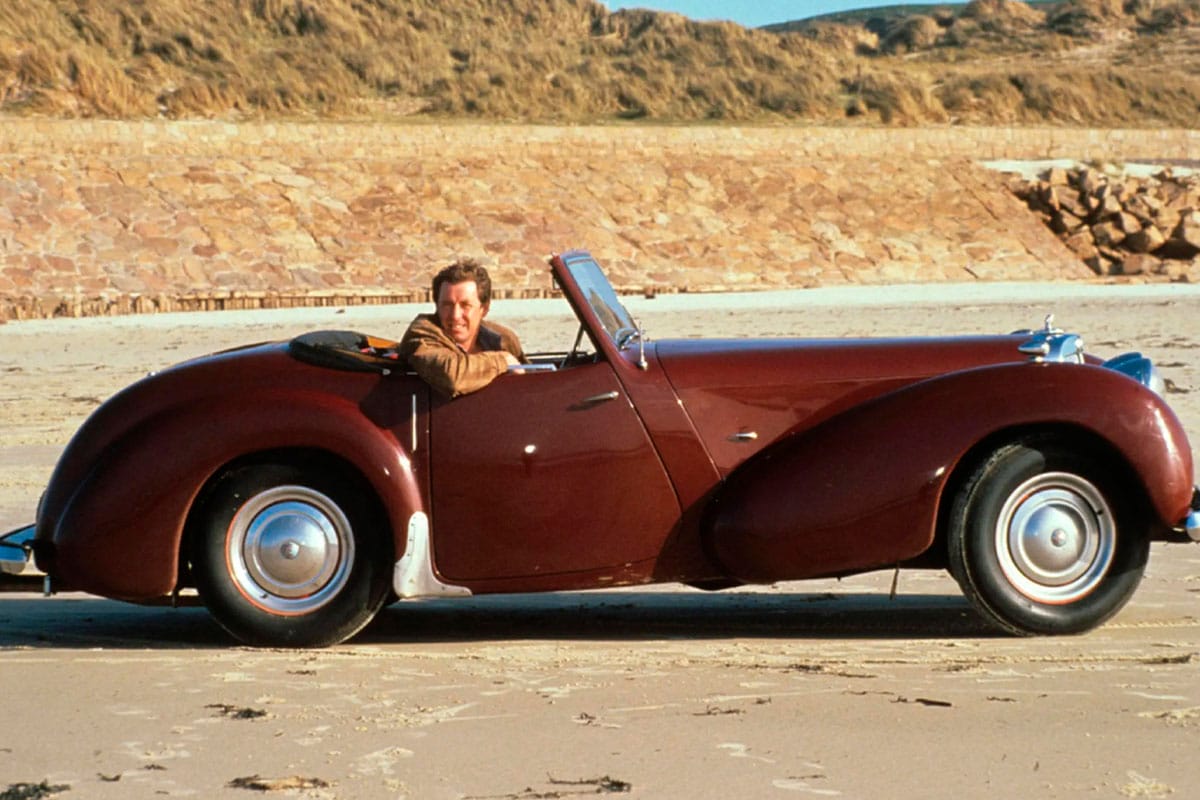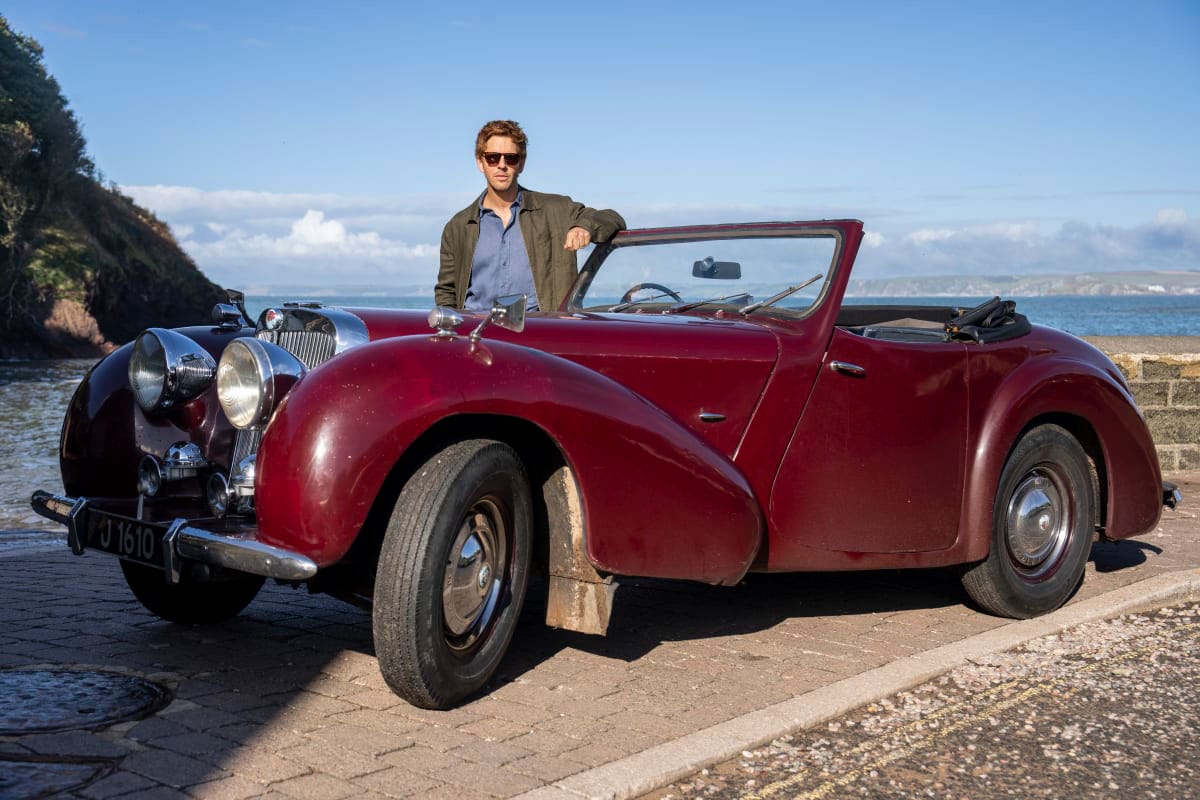BMH are delighted to hear of the return of Jim Bergerac’s Shapely Co-Star, his Burgundy red Triumph Roadster.

With the return of a revised and updated Bergerac crime drama to our screens in early 2025, attention has naturally fallen once again on the Jersey detective’s curvaceous and famous sidekick, his Burgundy red Triumph Roadster. It’s one of the key features, along with the dreamily picturesque island location itself, that made the jump from the 1980s Bergerac dramas to the otherwise rather fresh and different ‘new’ Bergerac of the mid-2020s. However, in the manner of one of Jim’s mystery solving episodes, all is not what it seems.
If you’re the sort of car enthusiast who can’t help noticing the out-of-period 1950s Land Rover seen in 1942 Alexandria in ‘Ice Cold In Alex’, or that the Jag getaway car at the end of a chase in The Sweeney isn’t the same car that started it, you’ll be entertained by spotting the different Triumph Roadsters used over the years in Bergerac. In fact, two different Triumph Roadsters were used, the first between 1981 and 1985 (also appearing in the titles of most post-1985 episodes), and the second from 1985 till the series finished in 1991. There’s also one or two stories about a third, engine-less car that was used sparingly as a static prop, but details of that one, if it actually existed at all, are very scarce.
The first car was a 1947 Triumph 1800 Roadster, wearing the distinctive Jersey ‘J1610’ number plates. It was leased by its Jersey owner to the BBC for the making of Bergerac until the BBC decided, in 1985, that it would be cheaper to own their own car – so cue the second car, a broadly similar 1949 Triumph 2000 Roadster, purchased by the BBC and starring in all subsequent episodes. Those of you now reaching for old Bergerac episodes on catch-up TV or DVDs to compare the two Triumphs need to know that the 1800 had no radiator mascot or spotlamps; it had pairs of round lamps on the rear wings, wing mirrors on the front wings and the interior trim was dark grey. By contrast, the later 2000 car had a mascot, spotlamps, no lamps on the rear wings, no wing mirrors and the interior was bright red. The red interior was a throwback to the car’s pre-BBC ownership cream painted bodywork, a better match for a bright red interior than Burgundy paint.


The 2000 Roadster had the mainland UK registration KLX322 when bought by the BBC, but of course wore the famous J1610 during filming. After filming the last episodes in 1991, the car was auctioned in aid of Children in Need and then began a rather busy life (with a succession of several owners) in the public eye, turning up at classic car and charity events for many years. It was subject to considerable restoration along the way and now features a beige interior. In a further twist, the old County Durham registration number ‘1610J’ was purchased as a personal plate for it, to get as close as possible to Bergerac’s original Jersey number.
So, which car stars in the new, 2025 Bergerac?
Actually, it’s the first one, the Triumph 1800 Roadster. A few details have changed in the ensuing 40 years, but it’s still recognisably the actual car that brought the Triumph Roadster to the public’s attention back in 1981. Apart from the sound, that is – the programme’s producers back in the 1980s thought the engine noise of the car didn’t suit its glamorous image and scenes featuring the car were over-dubbed with sounds of a MkII Jaguar!

Prior to Bergerac, not many people who weren’t car enthusiasts would have known what a Triumph Roadster was. Never a common sight on the roads, only 4500 in total were made between 1946 and 1949. The Roadster is often regarded as something of a bridge between pre- and post-war Triumphs but, in mechanicals and chassis design, it was very definitely a product of the Standard Motor Company, who had taken over Triumph in 1944: in truth the Roadster actually shared little with pre-war Triumphs and a great deal with pre-war Standards. The styling, however, deliberately tried (with varying degrees of success) to draw elements from Triumph’s very beautiful pre-war Dolomite Roadster, Standard’s intention being to position the upmarket Triumph marque head to head against the new, elegant, post-war Jaguar models.
The first version of the car, the Triumph 1800 Roadster (or 18TR, as it was officially known), was built between 1946 and 1948, when it was replaced in production by the 2000 Roadster (20TR). The main difference between the two models was that the former featured Standard’s pre-war 1.8 litre overhead valve engine (coincidentally the same Standard engine previously supplied to SS, Jaguar’s predecessor), while the latter’s larger 2 litre engine came from the then-new Standard Vanguard model. Roadster body construction was mostly aluminium panels over an ash wooden frame, a method becoming rather old fashioned by that time. As if to punctuate this, the Triumph Roadster became the last production car ever to feature the once-fashionable ‘dickey’ seats, additional occasional rear seats outside and behind the cockpit and accessed by climbing over the back of the car.
By 1949 the Triumph Roadster was being left behind rather painfully by much of the competition and production ceased. It took until 1953 for the next Triumph sports model to be unveiled: the more compact and overtly sporting Triumph TR2. That car would be the start of an incredibly successful line of ‘TR’ sports cars that generated many export sales (especially from America) for a hard-up, post-war Britain and whose high profile thoroughly eclipsed the Roadster it replaced in the Triumph line up. Eclipsed, that is, until 1981 when a new and instantly popular BBC Television detective series pushed a certain Burgundy red Triumph Roadster well and truly back into the limelight…
Back To News

